Myths Debunked: Bigger Wheels DON’T Roll Faster
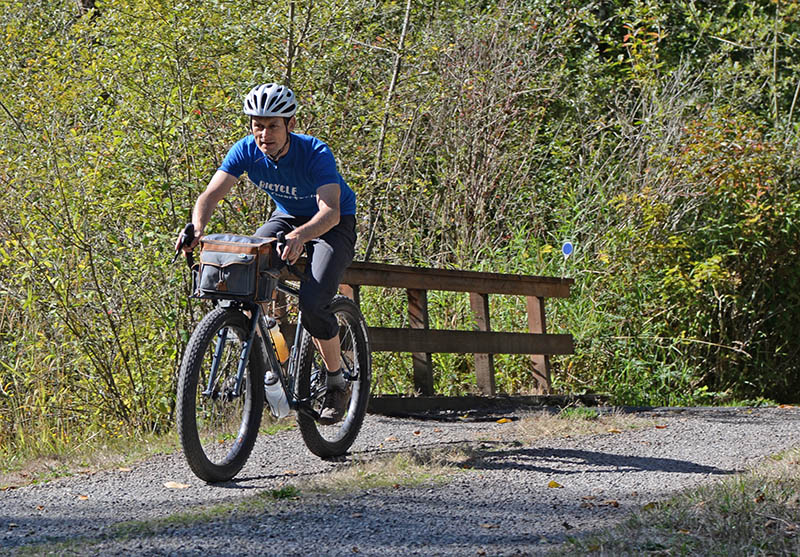
As part of our series on myths in cycling, let’s look at wheel size and how it affects speed. Even though all-road tires have grown wider in recent years, many bike makers have stuck with 700C wheels. It’s a size that is familiar to road cyclists, and there is also a fear that smaller wheels won’t roll as fast.
When we developed our Rene Herse tires, we tested all aspects of how tires perform – especially on rough roads. As part of that testing, we examined the performance of the common wheel sizes – 26″, 650B and 700C – on smooth and rough surfaces. We found that all wheel sizes roll at the same speed on road surfaces. This contrasts with mountain bikes, where a similar study has found small, but significant, speed benefits for larger wheels.
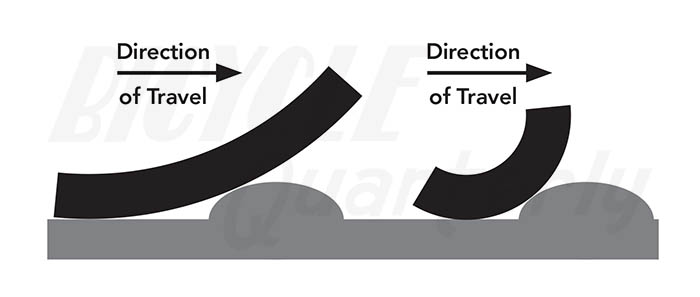
At first sight, it seems to make sense that a larger wheel might roll better over obstacles and road irregularities: With a larger wheel, the bump becomes comparatively smaller, effectively smoothing out the road. And we all know that a wheel rolls faster on a smoother road…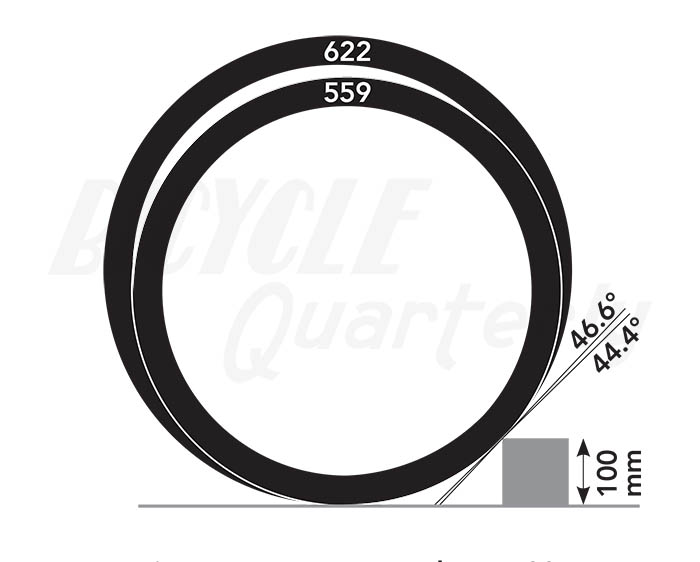
However, the difference between common wheel sizes is relatively small: Only about 10% between a 700C and a 26″ wheel (above). The approach angle – the angle at which the wheel is hitting an obstacle – is almost the same for both wheel sizes. Even when hitting a rock that is 4″ (100 mm) tall at its corners, the difference in approach angle is less than 2°. For smaller obstacles, the difference is even smaller.
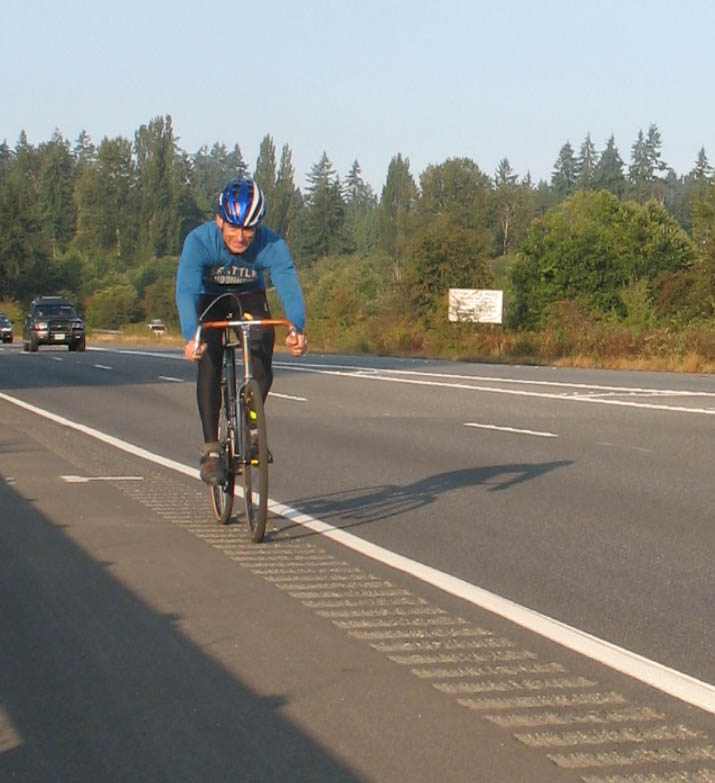
We tested three common wheel sizes in our famous ‘rumble strip’ testing. On a bike, rumble strips feel like the roughest cobblestones in Europe, or like very rough gravel. The goal of our study was to simulate the cobbles of Paris-Roubaix or the roughest parts of a gravel event like Unbound Gravel at race speeds.
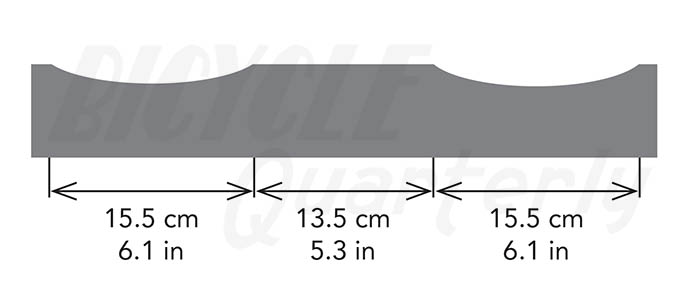
We chose the rumble strips of a brand-new highway as our test course, because they provide a uniform ‘rough surface,’ allowing us to test different setups in a carefully controlled setting. The smooth asphalt next to the rumble strip provides a comparison to judge how much energy is lost due to the vibrations of bike and rider.
We tested on a day with no wind and with constant temperatures. (Warmer temperatures make tires softer, which reduces their rolling resistance.) We did three test runs with each setup. The wheel sizes were tested in random order.
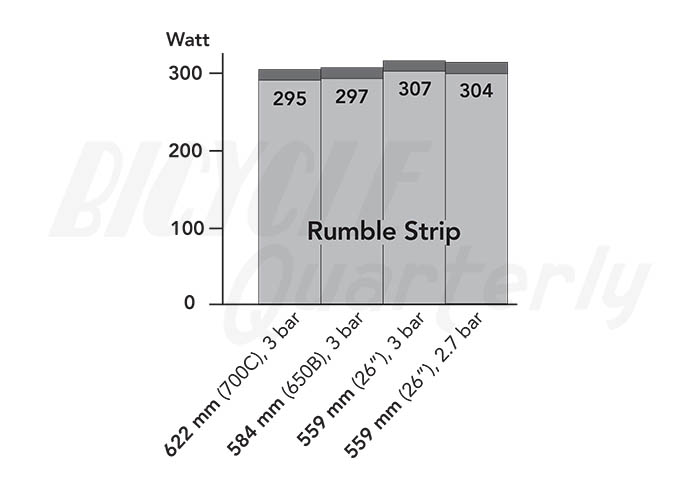
We tested otherwise identical 38 mm-wide tires (Schwalbe Marathon HS) in three wheel sizes: 700C, 650B and 26″. We measured the power required to pedal the bike at 32.2 km/h (20 mph) using an SRM crank.
The columns above show the averages for the three runs with each tire size. Every scientific study must perform a statistical analysis to ensure that the conclusions are based on real differences, and not just ‘noise’ in the data. (All measurements have some variability from one measurement to the next.) The dark part of each column is the ‘confidence interval.’
Looking at the first three columns, there are very small differences between wheel sizes. They fall within the dark bars – they are not statistically significant. This means they are too small to tell whether they were real performance differences or caused by ‘noise’ – variability between test runs. (And in real life, they are also too small to matter.)
The fourth column shows what happens when you reduce the air pressure slightly. We did that to check whether small variations in tire pressure might affect the results – it’s impossible to inflate tires repeatedly to exactly the same pressure. The differences were small – not enough to affect our results. (This is one reason why we tested with stiff tires. With supple tires, lower pressures roll significantly faster on rough terrain.)
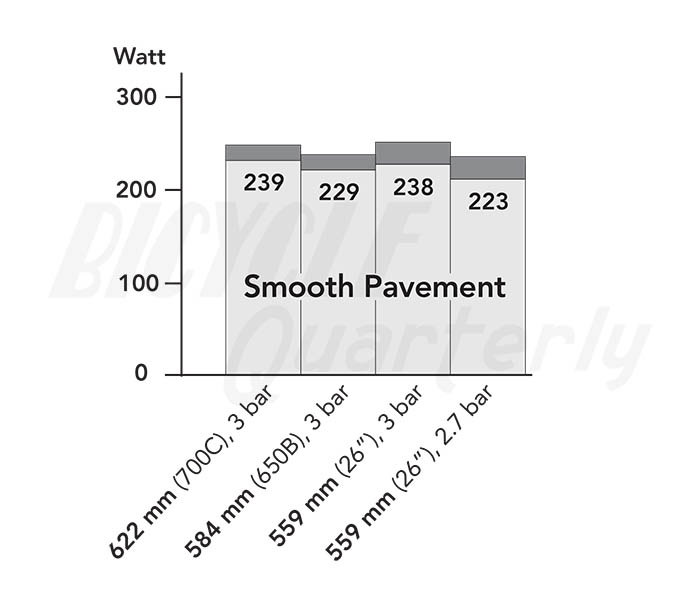
We also tested each setup on the smooth pavement next to the rumble strips. We found – not surprisingly – that larger wheels also don’t roll faster on smooth roads. More importantly, this test allowed us to confirm that our tires were identical in their construction, and only differed in their wheel size. We wanted to make sure that the tires in the three wheel sizes were not slightly different in some way that made them roll slower or faster. There was a little variability – the inevitable ‘noise’ – but the differences were not statistically significant. On the smooth pavement, the three wheel sizes required the same power, too.
The conclusion: On ‘road’ surfaces ranging from very smooth to very rough, the three common wheel sizes (700C, 650B, 26″) offer the same performance. For road or gravel riding, a 10% difference in wheel size is too small to affect the bike’s speed in meaningful ways.
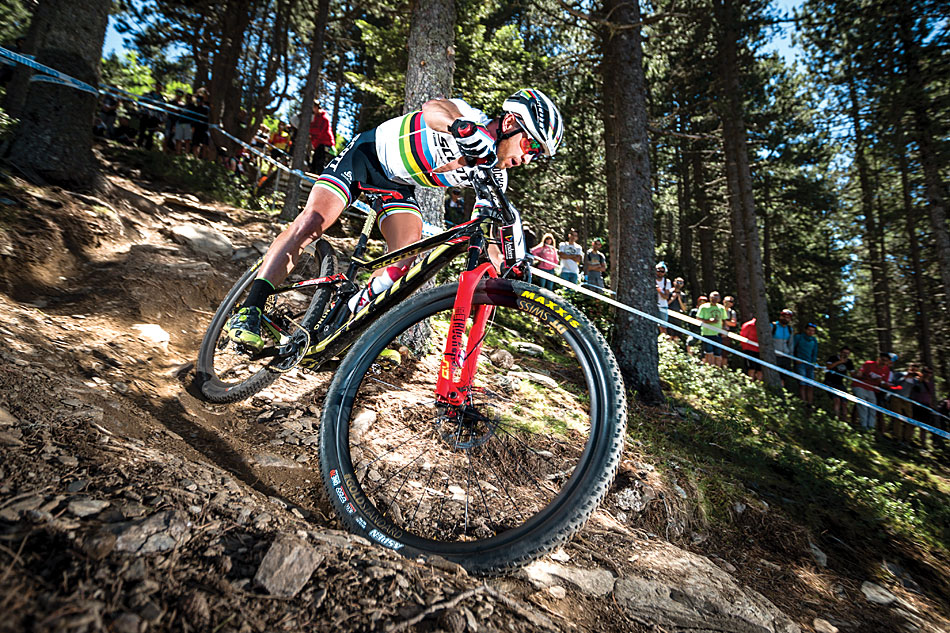
What about mountain bikes? Many riders report that 29ers with large 622 mm wheels roll much faster over really rough courses than traditional 26″ mountain bikes with 559 mm wheels. Even Nino Schurter (above), long a protagonist of the ‘in-between’ 650B wheels, now races on 29ers – and continues to dominate the sport.
In 2015, researchers at the Swiss Federal Institute of Sport performed an experiment similar to ours, using mountain bikes and a real off-road course. They wanted to find out whether the Swiss national team should ride 29ers or 26″ mountain bikes at the 2016 Olympic Games. The study’s use of real-world conditions is a plus, but it also introduces much more noise. The study used ten riders from the Swiss national team, each doing three test runs over the same course on their 29er and their 26″ mountain bike. Using many riders helps reduce the noise, which averages out the more data you collect.
The Swiss researchers measured heart rate, power output, and speed. Standard scientific procedures were followed: They made sure temperature was constant, they calibrated their PowerTap hubs (there are significant variations from one hub to the next), etc. All ten athletes were faster on the 29ers, on average by 2.4%. The statistical analysis showed that there was more noise in the data than in our rumble strip experiment, but the results were statistically significant.
What the test couldn’t show is why the 29ers were faster, since it did not isolate any of the factors. The bikes were top-of-the-line mountain bikes from the riders’ sponsors, and the 29ers may have differed from the 26″ bikes in other ways, not just in the wheel size. Back in 2015, 29ers were brand-new on the market, whereas the 26″ bikes may have been older models. The purpose of the Swiss study was to determine which bikes the riders should use for the Olympic Games, and the result was clear: Among 2015 mountain bikes, the 29ers were faster – for all riders, no matter their height and weight.
If the study had included 650B bikes as well, the results would have been more informative. If performance had improved across three wheel sizes, then the conclusion that larger wheels roll faster would be easier to make. Including more wheel sizes might also address whether mountain bike speed goes up linearly with wheel size. If that is the case, why stop at 29″? Even larger wheels should improve the performance of mountain bikes further.
Summarizing the two studies, the rumble strip tests showed that on smooth and rough roads, larger wheels don’t roll significantly faster. The Swiss study suggests that, for mountain bikes, larger wheels may be what makes 29ers faster than smaller-wheeled mountain bikes. It’s one more example where mountain and (all-)road bikes really are different.
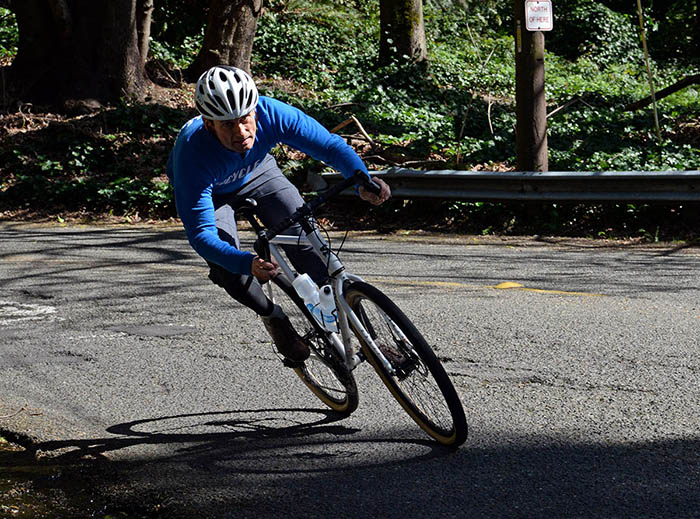
Back to road bikes: If larger wheels do not offer better performance – whether on road, gravel or cobbles – then we should select the wheels size of our bikes based on other considerations. Leaving aside issues of fit – smaller wheels make wide tires easier to fit on a bike, especially on smaller frames – it comes down to the handling we want from our bikes.
The best road bikes offer nimble handling that makes them easy to place on the road. Wider tires introduce more stability through a variety of factors (pneumatic trail; gyroscopic forces). The result: The bike becomes more stable – too stable for many riders’ tastes.
To keep the nimble handling of a racing bike, you need to keep the rotational inertia of the wheels the same – by reducing the rim diameter to make up for the taller (and heavier) tire. That is why 650B wheels are popular for all-road bikes. With ultra-wide tires, 26″ wheels make sense, too.
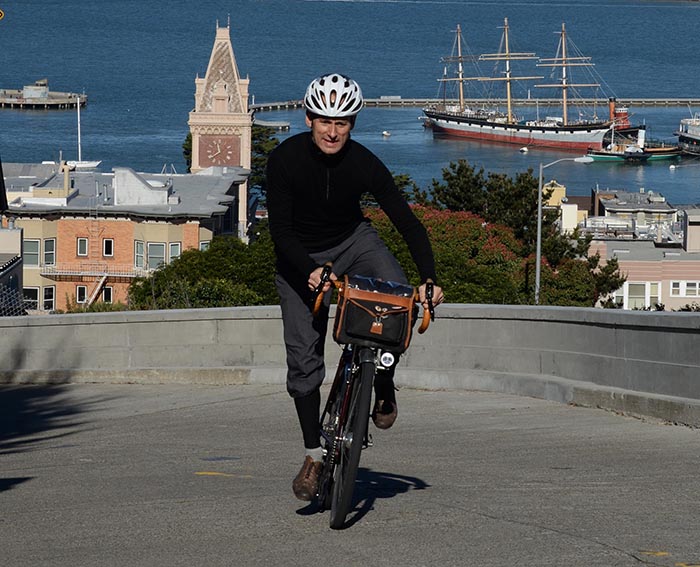
Rotational inertia affects not only the handling, but also how the bike feels when you rise out of the saddle and rock the bike from side to side: If your wheels have too much inertia, the bike becomes harder to rock – and that may actually slow you down.
Conversely, racing bikes have stuck with large 700C wheels even though smaller wheels would be lighter and – in theory – ‘spin up’ faster. I suspect that you need some inertia to push against when you rise out of the saddle. You probably want just the right amount of rotational inertia from your wheels for sprinting.
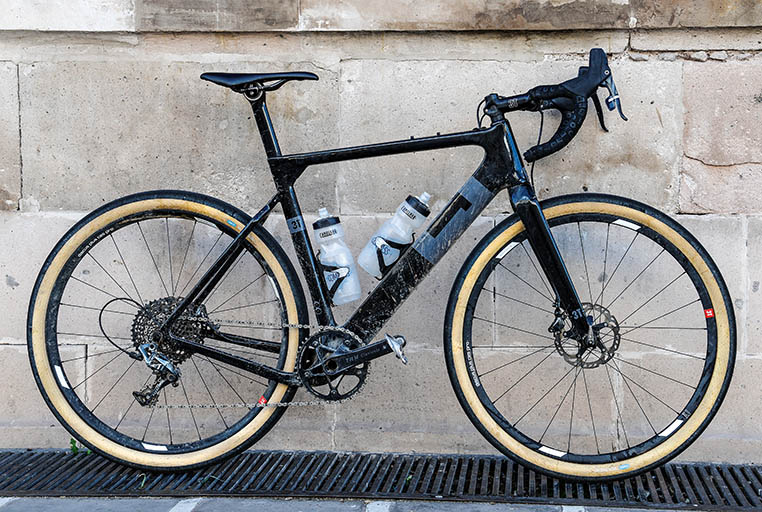
What does this mean in the real world of high-performance all-road bikes? We’ve already shown in the first part of this series that wider tires don’t roll slower than narrow ones. So there is no need to get a second, ‘go-fast’ wheelset with narrow tires for your all-road bike.
However, you do want to go to smaller wheels if you want to keep the nimble handling that makes a road bike so enjoyable. And avoid heavy tires: Wide tires have more rubber, and the effects of a lightweight tire are much more pronounced than they are on a narrow tires for racing bikes.
In practical terms, here are the wheel sizes that I like best:
- 700C x 28 mm
- 650B x 42 mm (with aluminum rims)
- 650B x 48 mm (with carbon rims)
- 26″ x 55 mm (with aluminum rims)
When you calculate the rotational inertia for all these wheels, you’ll find that they come out the same. That is why bikes with these wheels feel very similar.
How you want your bike to handle also depends on personal preference and on your terrain. If a road bike doesn’t feel stable enough for you, choose a larger wheel to gain stability. If you want even more nimble handling, you can go down a wheel size (or use narrower tires).
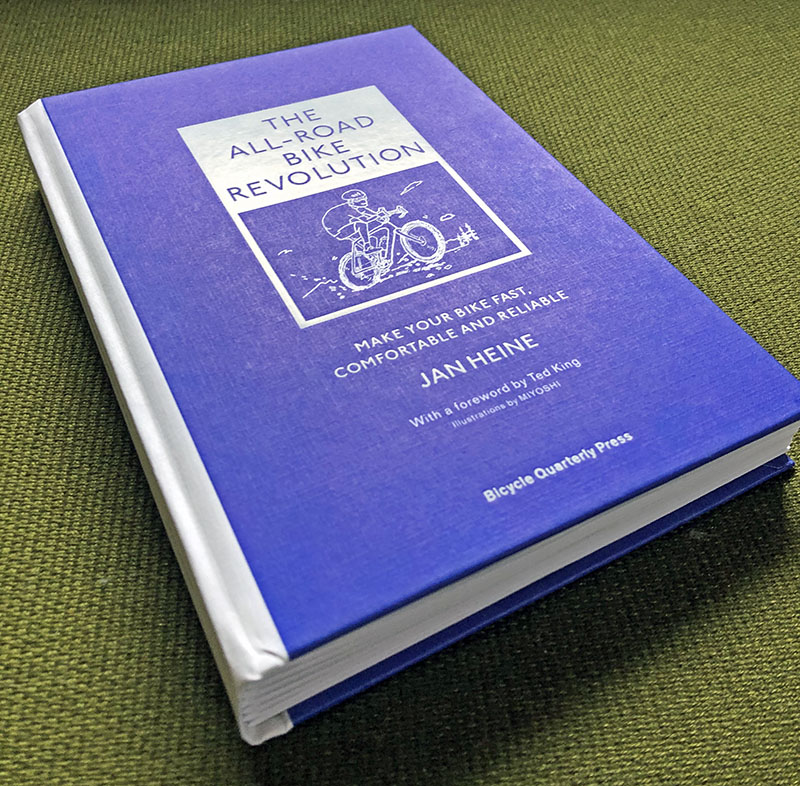
Update 11/17/2020: We’ve just published our new book ‘The All-Road Bike Revolution’ with all the research that has changed cycling in recent years. Find out why wide tires can be fast, how to find a frame that optimizes your power output, and how to get a bike that handles like an extension of your body. More information is here.


